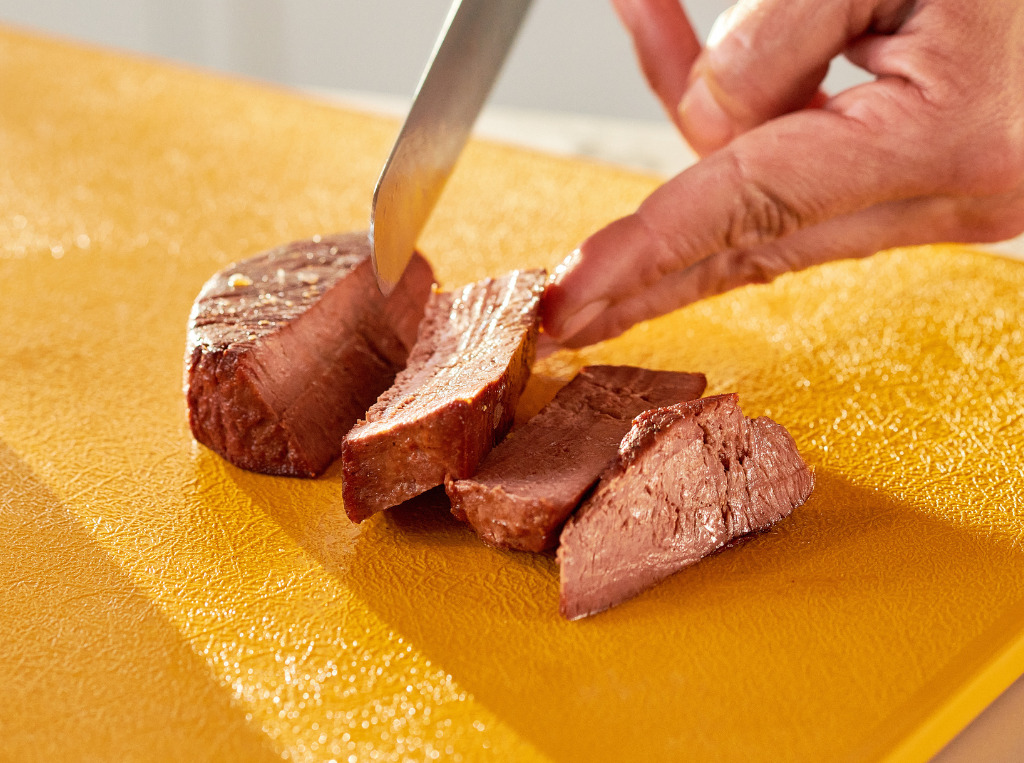5 Mins Read
The world of mycelium has skyrocketed in 2023, presented as an environmental and nutritional powerhouse that’s cost-effective when produced at scale – a new study explores these traits and wonders whether it could help solve food insecurity and global hunger.
We’ve been hearing a lot more about mycelium (or mushroom root) this year, with new innovations, breakthroughs, funding rounds and product launches facilitating the sector’s rise as alternative protein’s most dynamic frontier. In 2024, this will only grow, given the ingredient’s environmental, scalability and health credentials.
On that last bit, we’ve seen US mycelium leader Meati Foods unveil results from an AI-led study into the nutritional benefits of the fungi. And now, a new study explores the potential of mycelium as an effective tool to replace animal-derived meat, solve world hunger and malnutrition, and promote regenerative agriculture.
Published in the Journal of Agricultural and Food Chemistry, here’s what the authors of the research, including Harold H. Schmitz, Chair of the Scientific Board for Meati found. Note: all the authors are involved with Meati in various capacities.
The flavour potential of mycelium

The researchers say that while mycelium-based foods have a bland or slightly mushroom-like flavour profile, most commercial products add spices and seasonings to make them taste closer to the meat they’re intended to replace. This means there’s an opportunity for further consumer research to find the most appealing tasting notes, and develop technologies to enhance these flavours without natural additives.
One way to do so is by developing ‘in-process’ flavours through biochemistry and flavour chemistry. Different species of mushrooms can produce various profiles: think the aroma of beef boullion, curry or maple syrup, or the flavour and texture of chicken. Raw mushrooms contain aroma precursors (like amino acids and sugars), and upon cooking, these draw out unique flavours – this is how a lobster mushroom develops a seafood-like flavour, but only after thermal treatment.
“Many fungi contain the flavour chemistry potential to generate a wide variety of flavours both endogenously and through thermal treatment. This knowledge may also be applied to mycelium-based food products,” reads the study, albeit adding that further research is needed here.
Mycelium’s health and climate benefits

In terms of health factors, mycelium is said to be low in fat and high in fibre, with 20-30% of protein content in dry matter, which usually provides all of the essential amino acids. Additionally, mycoprotein can deliver essential micronutrients – especially those usually found in animal foods – like iron, zinc and vitamin B12.
The report cites studies showing the positive impacts of mycelial extracts on the immune system, cancer, cirrhosis and glycemic response. Plus, early intervention trials have found that mycelium lowers cholesterol in individuals with elevated levels – a three-week study revealed that 190g of mycelium per day lowered LDL cholesterol by 21% on average versus animal protein.
The researchers also mention how mycelial fermentation can reduce food waste by valorising the sidestream – for example, using the process on okara (the pulp leftover from soy milk or tofu production) to make tempeh or omcom (traditional mould-fermented Indonesian plant proteins).
The study echoes the FAO’s COP28 roadmap in suggesting that plant-based food “can be less favourable in their essential nutrient composition and bioaccessibility” than animal-derived foods. Since mycelium – like meat – is a good source of protein and micronutrients, replacing meat with the fungi root can have a positive planetary impact. The carbon footprint of mycofoods is four and 10 times lower than chicken and beef, respectively.
But the authors add: “While promising, studies are limited to one species of mycelium and will need to account for variations in the technologies utilised to grow mycelial protein and the ingredients used in their production.”
How mycelium could solve global hunger

Global hunger and food insecurity are linked to a lack of access to healthy food and social inequality, but the key to replacing animal foods is to increase the availability and affordability of alternative protein sources. But protein affordability is dependent on production costs – animal foods can take weeks to years, while plant proteins through traditional agriculture can take several months. This is where mycelium comes in as an appealing option.
More innovations are enabling mycelium production at scale and lower costs, developing a protein that can grow in a relatively short period – days instead of months or years. But there’s a need for further investment in resources and infrastructure in this space to help find ways to cut production costs and educate consumers on the use of this ingredient as a dietary staple.
To make mycelium a sustainable solution for human nutrition and global hunger, funding needs to go to both solid-state and submerged fermentation tech. The authors cite research finding that mycoprotein production can surpass beef and even become cheaper than poultry, which means a firm foundation of economics and positive return on investment is key to achieving environmental and nutritional targets for mycelium.
“Technology advances have enabled the production of mycelium into scalable biomass for use as an alternative sustainable food product,” the authors write. Future considerations could include adapting mycelium production to utilise local resources and creating awareness programs to show how it can fit cultural practices and meat-eater preferences. Meanwhile, many consumers are concerned about the ultra-processed nature of most plant-based meat products, but the filamentous and nutrient-dense nature of certain mycelium strains enables product development with fewer additives for flavour and texture.
“Moreover, mycelium’s unique properties enable its use as an ingredient in other product formulations and represent an opportunity to reduce the need for other additives within alternative plant-protein-based recipes,” the researchers write, adding that the fungi can usher in a new ear for product development when produced at scale. “Once achieved, mycelium will certainly be appealing as an environmentally friendly, nutrient-dense protein source that can aid in the reduction of global hunger.”




